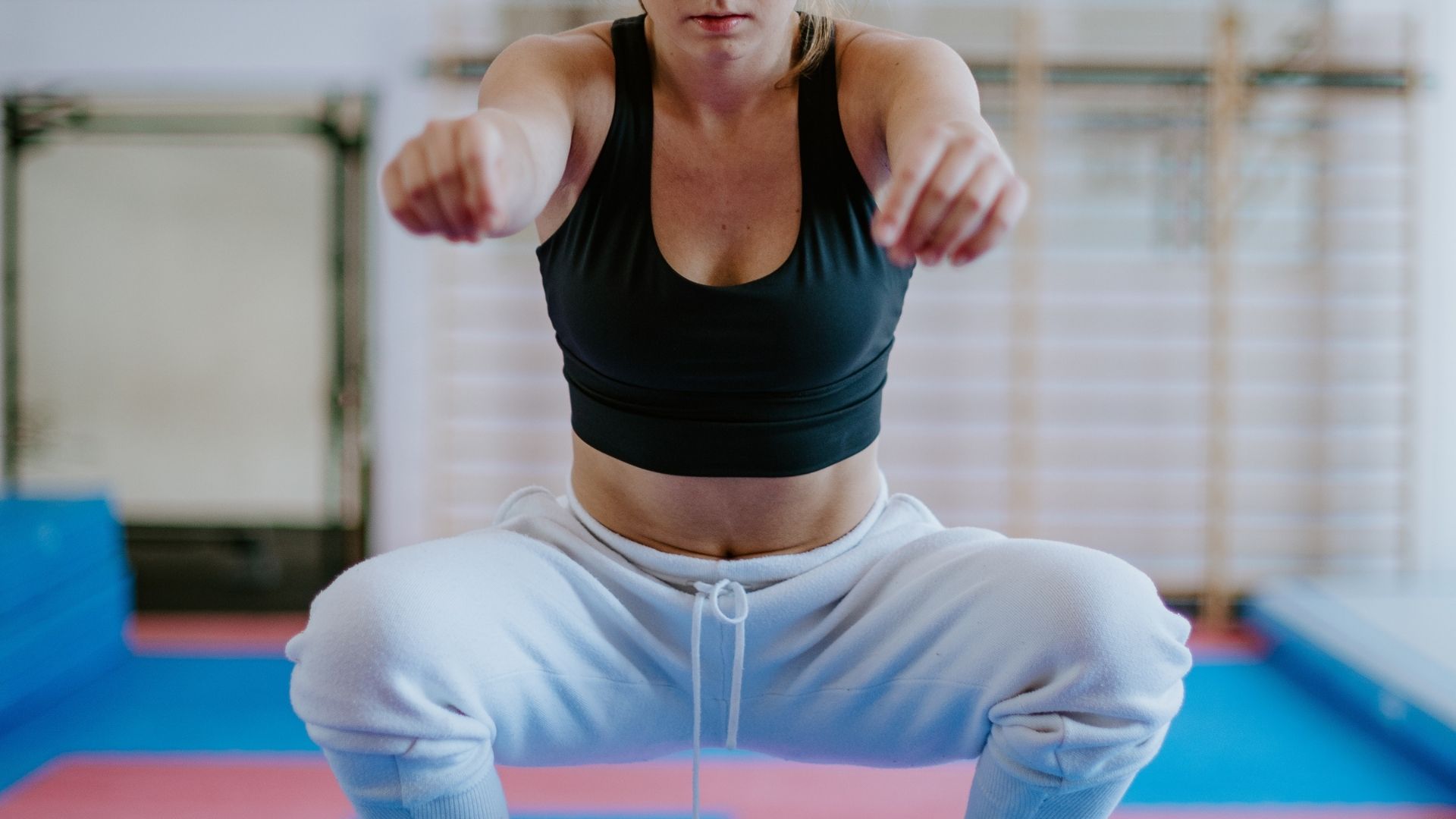Squats are a popular exercise known for their ability to engage multiple muscle groups simultaneously. Besides building strength and improving mobility, many individuals report feeling a release of tension after performing squats.
This article aims to delve into the reasons behind this phenomenon, exploring the physical and psychological aspects that contribute to the feeling of tension release during and after squats.
Squats can provide a release of tension due to several reasons. They stretch the muscles in the thighs, hips, and lower back, relieving tightness. Squats also activate the gluteal muscles, promoting blood flow and muscle engagement. This increased blood flow supplies oxygen and nutrients, reducing muscle tension. Additionally, squats stimulate the release of endorphins, natural painkillers and mood boosters. By engaging the core, squats improve posture and alleviate tension in the lower back. Overall, squats offer a multi-faceted approach to releasing tension and promoting relaxation.
It’s worth noting that everyone’s experience may vary, and there can be other factors at play. If you have any specific concerns or persistent discomfort, it’s always a good idea to consult with a healthcare professional or a qualified fitness trainer who can provide personalized guidance.
Stretching of muscles.
When you perform squats, your body goes through a bending motion where you lower yourself down by bending your knees.
This bending action causes a stretch in the muscles of your thighs, hips, and lower back.
Throughout the day, these muscles can become tight and tense due to various factors like sitting for long periods, physical activity, or stress.
Squats help to counteract this tightness by actively stretching these muscle groups as you lower yourself down.
Stretching the muscles in your thighs, hips, and lower back during squats helps to release the tension that may have built up in those areas.
As the muscles elongate and lengthen during the squatting motion, any tightness or knots in the muscles can be relieved. This stretching action promotes relaxation in the muscles and can provide a sense of release from tension or discomfort.
It’s important to note that while squats can help with muscle tension, it’s always advisable to perform them with proper form and technique to avoid injury.
If you experience any pain or discomfort during squats, it’s recommended to consult a healthcare professional or a qualified fitness trainer for guidance.

Activation of the glutes.
When you do squats, one of the primary muscle groups that get activated are the gluteal muscles, which are the largest muscles in your body. These muscles include the gluteus maximus, gluteus medius, and gluteus minimus.
As you lower yourself down into the squat position, your gluteal muscles contract and engage to control the movement and stabilize your hips and pelvis.
This contraction stimulates blood flow to the glutes, increasing circulation in the area.
Improved blood flow to the gluteal muscles brings in fresh oxygen and nutrients while removing metabolic waste products.
This increased blood flow can help relieve tension and stiffness that may have accumulated in the glutes, promoting a sense of release and relaxation.
Additionally, engaging the gluteal muscles during squats can help strengthen and tone them over time.
Strengthening the glutes is important not only for aesthetic purposes but also for proper hip and pelvic stability, which can help alleviate tension and discomfort in the lower back and hips.
By targeting the gluteal muscles and promoting blood flow, squats can contribute to releasing tension in that area, providing a feeling of relief and improved muscle function.
It’s essential to perform squats correctly to effectively engage the glutes and avoid strain or injury. If you have any concerns or questions, consider consulting a healthcare professional or a qualified fitness trainer for guidance.
https://youtu.be/nzfPtLrfx_A
Increased blood flow.
When you perform squats, you engage multiple joints and muscle groups in your lower body, including your hips, knees, and ankles.
This compound movement increases the demand for oxygen and nutrients in these areas.
As your body goes through the squatting motion, blood flow to the lower body is enhanced. The increased blood circulation delivers a fresh supply of oxygen and nutrients to the muscles involved in the exercise.
This improved supply of oxygen and nutrients can help alleviate muscle tension and promote relaxation.
Additionally, the enhanced blood flow helps remove metabolic waste products, such as lactic acid, from the muscles. Accumulation of these waste products can contribute to muscle fatigue and discomfort.
By increasing circulation, squats assist in flushing out these byproducts, further reducing muscle tension.
The overall effect of increased blood flow during squats is a revitalization of the muscles in your lower body.
The improved oxygenation and nutrient delivery, along with the removal of waste products, can contribute to the release of tension and promote a feeling of relaxation in the targeted muscle groups.
It’s important to note that maintaining proper form and technique while performing squats is crucial for maximizing the benefits and minimizing the risk of injury.
If you have any concerns or questions, it’s advisable to consult with a healthcare professional or a qualified fitness trainer for personalized guidance.
Release of endorphins.
When you engage in squats, your body undergoes physical exertion, which can trigger the release of endorphins.
Endorphins are natural chemicals produced by the body that act as pain relievers and mood enhancers.
During exercise, including squats, endorphins are released by the central nervous system and interact with the receptors in your brain.
This interaction leads to a reduction in the perception of pain and an increase in feelings of well-being and positivity.
The release of endorphins can have a direct impact on reducing feelings of tension. These chemicals can help alleviate the physical and emotional stress that may have built up in your body, promoting a sense of relaxation and relief.
Moreover, endorphins can positively influence your mood. They are known to boost feelings of happiness, contentment, and overall well-being.
By triggering the release of endorphins, squats can contribute to a sense of mental and emotional relaxation, helping to alleviate tension and promote a more positive state of mind.
It’s important to note that individual responses to endorphin release may vary, and the level of endorphin release can depend on various factors, such as the intensity and duration of exercise.
Nonetheless, the potential for endorphin release during squats provides an additional mechanism for the release of tension and the promotion of a sense of well-being.
If you have any concerns or questions about exercise or your well-being, it’s always recommended to consult with a healthcare professional for personalized advice.
Core stabilization.
When you perform squats, it is essential to engage your core muscles to maintain proper form and stability throughout the exercise.
The core muscles include the muscles of your abdomen, lower back, and pelvis.
By actively engaging your core during squats, you create a stable and strong foundation for the movement.
This core stabilization helps distribute the load and forces evenly throughout your body, reducing the strain on specific areas, such as the lower back.
Tension in the lower back is a common issue for many people, often caused by factors like poor posture, weak core muscles, or excessive sitting. Squats can help alleviate this tension by strengthening and stabilizing your core.
As you strengthen your core muscles through squatting, they become better equipped to support your spine and maintain proper alignment.
Improved core strength and stability can help correct imbalances in the muscles of the lower back and abdomen, leading to a release of tension in those areas.
Furthermore, proper core engagement during squats promotes good posture. As you develop a stronger core, you naturally become more aware of your posture and are better able to maintain an upright position.
Correcting poor posture can help alleviate tension and discomfort in the lower back and contribute to an overall release of tension in that area.
It’s important to note that building core strength and stability takes time and consistent effort. It’s advisable to start with proper form and gradually increase the intensity of your squatting exercises.
If you have any concerns or questions about incorporating squats or core exercises into your routine, consulting with a healthcare professional or a qualified fitness trainer can provide you with personalized guidance.
Here’s a table outlining the information:
| Aspect | Explanation | Example |
|---|---|---|
| Why | Squats help release tension in the body | To alleviate muscle tightness and promote relaxation |
| How | – Stretching of muscles
– Activation of glutes – Increased blood flow – Release of endorphins – Core stabilization |
Bending knees, lowering body, engaging gluteal muscles |
| When | During exercise or workout sessions | As part of a regular strength training routine |
| What to Consider | – Proper form and technique
– Gradual progression – Individual limitations and goals |
Maintaining a neutral spine, avoiding excessive weights |
| Example | Performing squats to stretch and activate muscles, improve blood flow, release endorphins, and strengthen the core muscles | Doing 3 sets of 10 squats with bodyweight, gradually increasing intensity over time |
This table summarizes the reasons why squats can release tension, how they achieve this through various mechanisms, when they should be performed, factors to consider for safety and progress, and an example of incorporating squats into a workout routine. Remember to consult with professionals or experts to tailor the approach to your specific needs and abilities.
Conclusion.
In conclusion, squats can contribute to the release of tension in several ways. The stretching action involved in squats helps to alleviate tightness and tension in the muscles of the thighs, hips, and lower back.
The activation of the gluteal muscles promotes blood flow, providing oxygen and nutrients to the area and aiding in the release of tension.
Squats being a compound exercise increase blood flow to the lower body, supplying oxygen and nutrients to the muscles, which can help reduce muscle tension and promote relaxation.
The release of endorphins during squats acts as natural painkillers and mood boosters, helping to reduce feelings of tension and promoting a sense of well-being.
Lastly, engaging the core muscles during squats strengthens and stabilizes the core, leading to improved posture, reduced tension in the lower back, and overall release of tension in that area.
It’s important to remember that individual experiences may vary, and it’s crucial to perform squats with proper form and technique to maximize benefits and minimize the risk of injury.
If you have any concerns or questions about incorporating squats into your exercise routine, it’s recommended to consult with a healthcare professional or a qualified fitness trainer for personalized advice.

Hey there, it’s Mike Rrsq, the Editor-in-Chief over at Jsquat.com, and I’m absolutely obsessed with all things squat fitness! I’ve been lucky enough to get some serious recognition for my work in this field. With a solid background in the fitness and wellness industry, I’ve been there right from the get-go, helping shape this website into what it is today.
You see, I’m not just the boss around here; I’m also a passionate contributor. I love sharing my insights through my articles, and trust me, they’re not your run-of-the-mill stuff. Each piece I write is a labor of love, filled with my expertise and real-world experience in the fitness universe. So, if you’re into fitness and looking for some inspiration, you’re in the right place!

